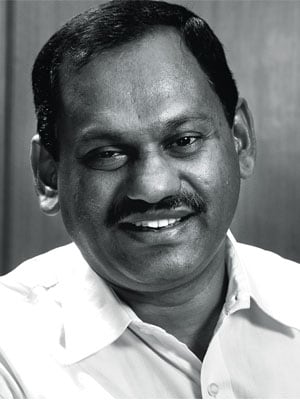
Former Head of WorldSpace India Shares His Comeback Plan
M. Sebastian tells Forbes India that his new venture could replicate the success of the satellite radio network
M. Sebastian
Occupation: Co-founder and CEO, Timbre Media.
Age: 44
Education: M.Tech IIT-Kargpur
Career: Research Associate in satellite applications – IIT Bombay; Scientist, ISRO, Bangalore; Joined WorldSpace in 1998, was in charge of India and Middle East when WorldSpace closed operations in 2009; launched Timbre Media in 2010
Interests: Space technology and reading
Q. Looking back, what do you think went wrong with the earlier set up?
First of all, it was a mammoth exercise. It was a business where $1.2 billion was spent even before the first consumer was acquired. We had to launch our own satellite, create infrastructure, and develop product and technology. We were introducing a new concept, a new product line, a subscription-based service in radio for the first time in the country. It involved a lot of education, customer awareness and brand building. We were probably a bit ahead of the times. We introduced our services in 2000 and DTH television came to India several years later. At the same time, WorldSpace then was only a percentage of what it could have been. We could not provide the service in automobiles, because we did not get regulatory clearance. That’s a long drawn process here. Meanwhile, the parent company got into a bankruptcy problem — and once that happened it had to go through that process. Also, it happened at the thick of the financial crisis. WorldSpace India was a profitable operation. But we had to close it down.
Q. How much of the earlier popularity can be attributed to your tie up with Airtel DTH?
That came later. I used to sit inside Worldspace outlets to see what customers looked for. They came for its digital quality, the programmes, the number of channels. For the first time in history, they could listen to their favorite genre - be it Carnatic, Hindustani, Old Hindi songs – whenever they wanted, without ads. They saw it was unique. It’s possible to get one hour Hindustani programme. But, to get it 24 hours, you need a lot of depth and breath.
Q. Can the earlier success be replicated?
If everything goes well, we could do much more than that. Earlier, there was a limitation of portability and mobility. If you wanted to listen, you had to sit in front of your set. Now we are tying up with multiple platforms – internet, mobile DTH. The same team has come together and I can say the content will be as good, if not better. Earlier, we were constrained by the number of stations. Now, we are constrained only by our energy.
Q. But many customers seem to have loved the satellite radio platform.
If someone launches a satellite radio tomorrow, that could very well be another platform. It really depends on the distributors. I understand how WorldSpace customers feel. I have got so many letters from WorldSpace customers. They are from old people, and I know how emotional they feel about it.
Q. But a reason why customers went for satellite radio is the quality of sound.
Very true. In the case of satellite radio, there was no degradation of signals, and we had control of the process. Here, the final reception quality will depend on the platform and end device. At our end, we will ensure that it is of high quality. Technology is progressing a lot and there might not be significant quality degradation.
Q. Any updates on the tie ups?
We have several discussions going on with distribution companies. We are talking with mobile operators, websites and DTH operators. We are primarily a content company. A lot of things need to be worked out at the distributors end –integration, pricing, marketing and so on. At the moment I am not able to say when exactly we will launch.
Q. How different will be the pricing?
In case of earlier Worldspace, it was rigid. Customers had to pay an annual fee of Rs 1800, and with tax it came to about Rs 2000. There was no other option. What’s going to happen in the present set up, there will be different types of offering. A mobile operator could for example offer weekly and monthly subscription. It’s possible to go for specific channels. What we will have is more freedom and flexibility.
Q. Coming back to satellite radio, in your view, what are the chances of it coming back? Have you made any attempts so far?
There is a logical possibility. I don’t know what their problems are, and I don’t think they have made any decision one way or the other. We got the license from its present owner. They were happy to work with us, because we were the same team running Worldspace in India. Personally, I hope it comes back.
(This story appears in the 30 November, -0001 issue of Forbes India. To visit our Archives, click here.)





